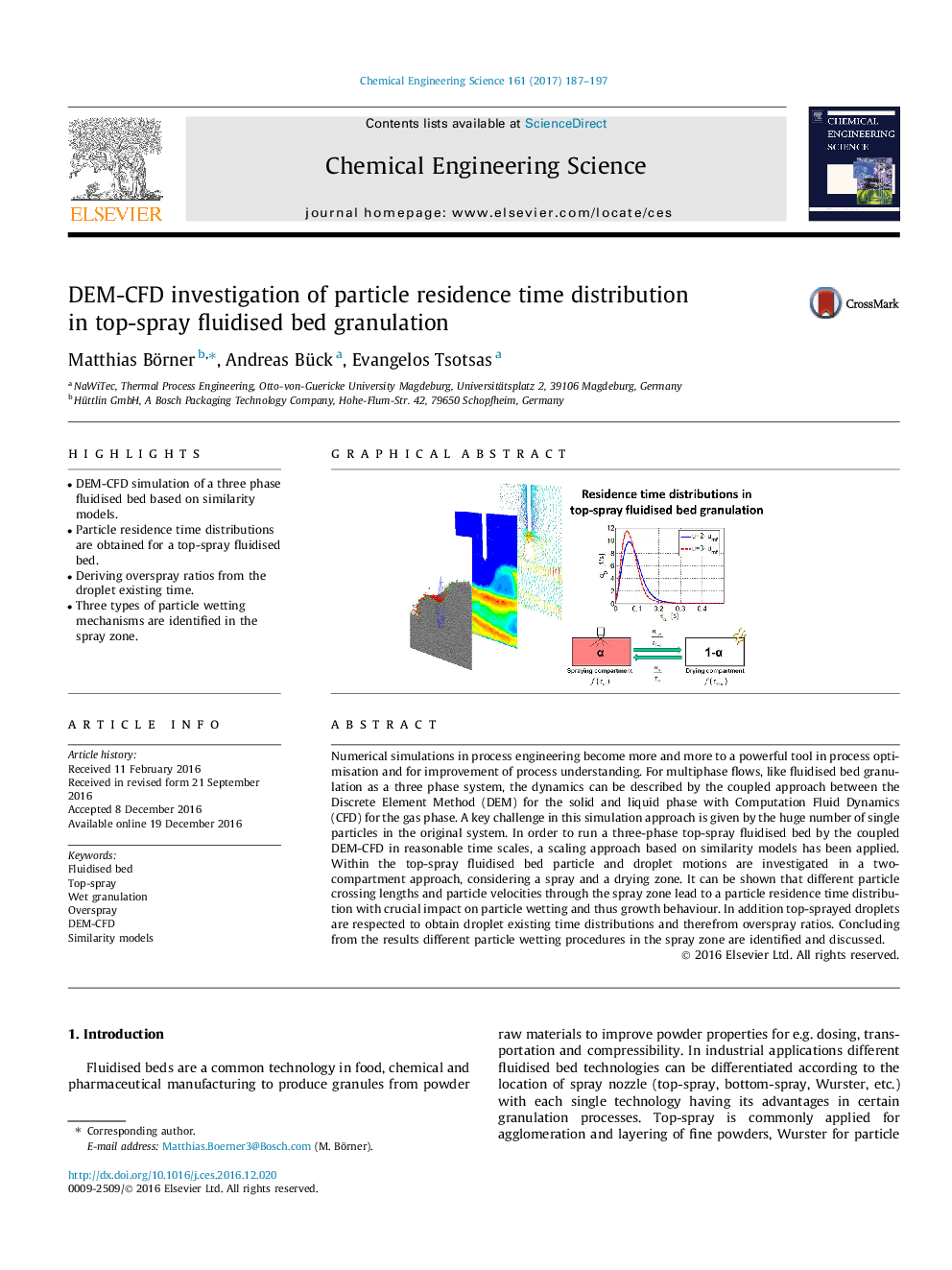| Article ID | Journal | Published Year | Pages | File Type |
|---|---|---|---|---|
| 6467506 | Chemical Engineering Science | 2017 | 11 Pages |
â¢DEM-CFD simulation of a three phase fluidised bed based on similarity models.â¢Particle residence time distributions are obtained for a top-spray fluidised bed.â¢Deriving overspray ratios from the droplet existing time.â¢Three types of particle wetting mechanisms are identified in the spray zone.
Numerical simulations in process engineering become more and more to a powerful tool in process optimisation and for improvement of process understanding. For multiphase flows, like fluidised bed granulation as a three phase system, the dynamics can be described by the coupled approach between the Discrete Element Method (DEM) for the solid and liquid phase with Computation Fluid Dynamics (CFD) for the gas phase. A key challenge in this simulation approach is given by the huge number of single particles in the original system. In order to run a three-phase top-spray fluidised bed by the coupled DEM-CFD in reasonable time scales, a scaling approach based on similarity models has been applied. Within the top-spray fluidised bed particle and droplet motions are investigated in a two-compartment approach, considering a spray and a drying zone. It can be shown that different particle crossing lengths and particle velocities through the spray zone lead to a particle residence time distribution with crucial impact on particle wetting and thus growth behaviour. In addition top-sprayed droplets are respected to obtain droplet existing time distributions and therefrom overspray ratios. Concluding from the results different particle wetting procedures in the spray zone are identified and discussed.
Graphical abstractDownload high-res image (222KB)Download full-size image
